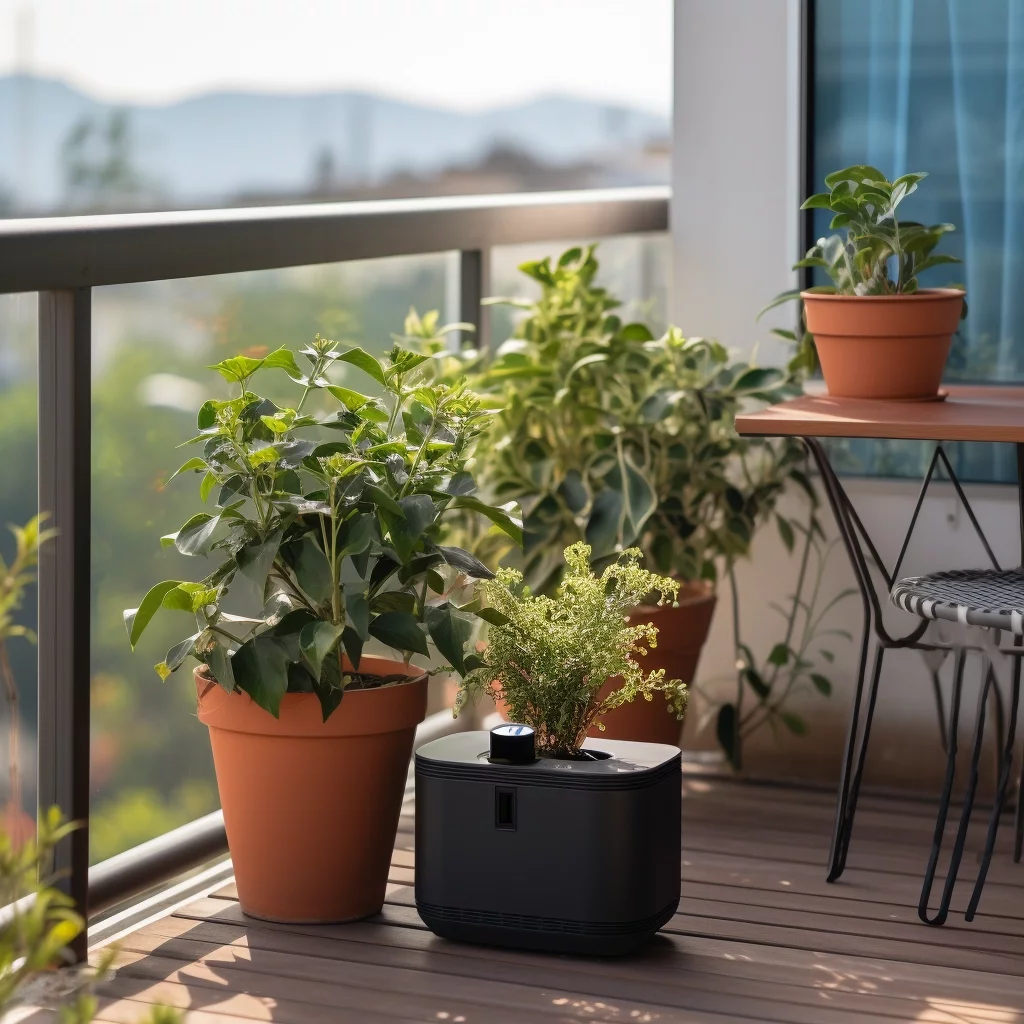Gardening enthusiasts and budding botanists, gather around! Today, we’re unveiling the secrets to keeping your indoor plants not just alive but thriving. From high-tech solutions to clever DIY hacks, we’re covering all grounds. Whether you’re a seasoned gardener or a novice with a newfound love for indoor greenery, these tips are guaranteed to transform your plant care routine. 🌱

🚿 Embracing the Convenience of Easy Plant’s Self-Watering System
Why Self-Watering?
- Consistent Moisture: Provides a steady supply of water, mimicking natural conditions.
- Time Saver: Perfect for busy plant parents. Monthly checks and refills are all it takes!
How to Implement:
- Choose the Right System: Easy Plant‘s self-watering systems are a great start.
- Set-Up: Follow the instructions to ensure it’s fitted properly for your plant type.
💧 Mastering the Art of Bottom Watering
Benefits of Bottom Watering
- Prevents Over-watering: Keeps roots from sitting in excess water, reducing rot risk.
- Fights Gnats: Discourages gnat infestations by avoiding wet topsoil.
How-To Guide
- Choose a Container: Use a tub or sink large enough to accommodate your plant’s pot.
- Watering Process: Place your plant in the container, allowing it to absorb water through drainage holes.
- Duration: Leave for about 30 minutes, then remove and let excess water drain.
☀️ Compensating for Lack of Sunlight
Innovative Light Solutions
- Mirrors: Reflect natural light to your plants. Position them strategically for maximum effect.
- Grow Lights: A boon for dark spaces. Synthetic grow lights can supplement or replace natural sunlight.
🌱 Utilizing Natural Fertilizers
Why Go Natural?
- Eco-Friendly: A sustainable way to provide nutrients.
- Cost-Effective: Utilizes household waste, saving money.
DIY Fertilizers
- Vegetable/Egg Water: Save the water used to boil vegetables or eggs. Cool it, then use it for watering.
- Crushed Eggshells: Rich in calcium, they can be sprinkled into the soil.
- Coffee Grounds: A nitrogen-rich addition to your compost or directly to the soil.
🔄 Cultivating Growth and Health
Plant Care Techniques
- Rotating Plants: Ensures even growth by exposing all sides to light.
- Pruning: Regularly remove dead or yellowing leaves.
- Grouping for Humidity: Placing plants together can create a mini-humidity climate.
- Staking Weak Stems: Use stakes or trellises for support.
🌟 Extra Tips for Indoor Plant Success
Monitoring Plant Health
- Regular Checks: Look out for signs of distress like drooping leaves or discoloration.
- Pest Control: Be vigilant about pests. Use natural repellents or insecticidal soap.
Creating the Perfect Environment
- Temperature Control: Keep your indoor garden away from extreme temperatures.
- Air Circulation: Ensure good air flow around your plants to prevent fungal diseases.
Understanding Your Plants
- Individual Needs: Each plant has unique requirements. Research and tailor your care.
- Patience and Observation: Plants take time to adjust. Observe changes and adapt your care routine.
📚 Further Learning and Resources
Continued learning is key to becoming a proficient plant parent. Here are some resources to deepen your knowledge:
- Books: “The New Plant Parent” by Darryl Cheng offers insights into understanding plant needs.
- Online Forums: Websites like Gardeners’ World are goldmines of information and community advice.
- Local Workshops: Participate in workshops offered by local nurseries or gardening groups.
Keeping your indoor plants alive and flourishing is an art and science that involves dedication, patience, and a bit of ingenuity. By implementing these hacks and continually educating yourself, you’ll soon be the proud caretaker of a lush, thriving indoor garden. Here’s to green homes and happier, healthier living spaces! 🏡🌱💚
Megan Stewart, a houseplant aficionado and biologist, resides in the city of Portland, Oregon, USA. Her passion for greenery is matched only by her academic prowess; Megan holds a degree in Biology from the University of Oregon. This background has provided her with a rich understanding of the biological intricacies of plant life, which she skillfully applies to her collection of indoor plants.
Megan's home is a testament to her love for all things green, filled with a diverse array of houseplants ranging from exotic orchids to robust succulents. When she's not tending to her indoor garden, she spends her time with her beloved pets, a constant source of companionship and joy. Her articles are a reflection of her life's passions, offering readers a blend of practical plant care advice, and insightful biological tidbits.
Through her writing, Megan aims to inspire others in the USA and beyond to create their urban jungles and foster a deeper connection with nature.

